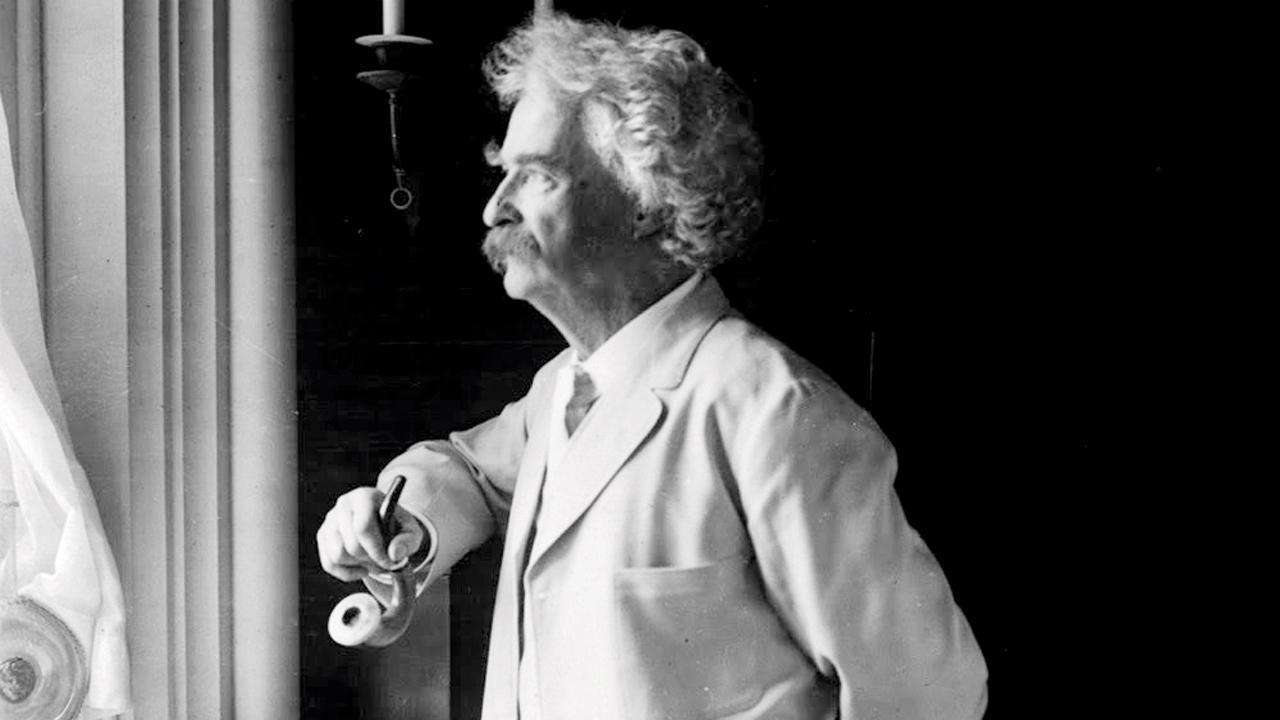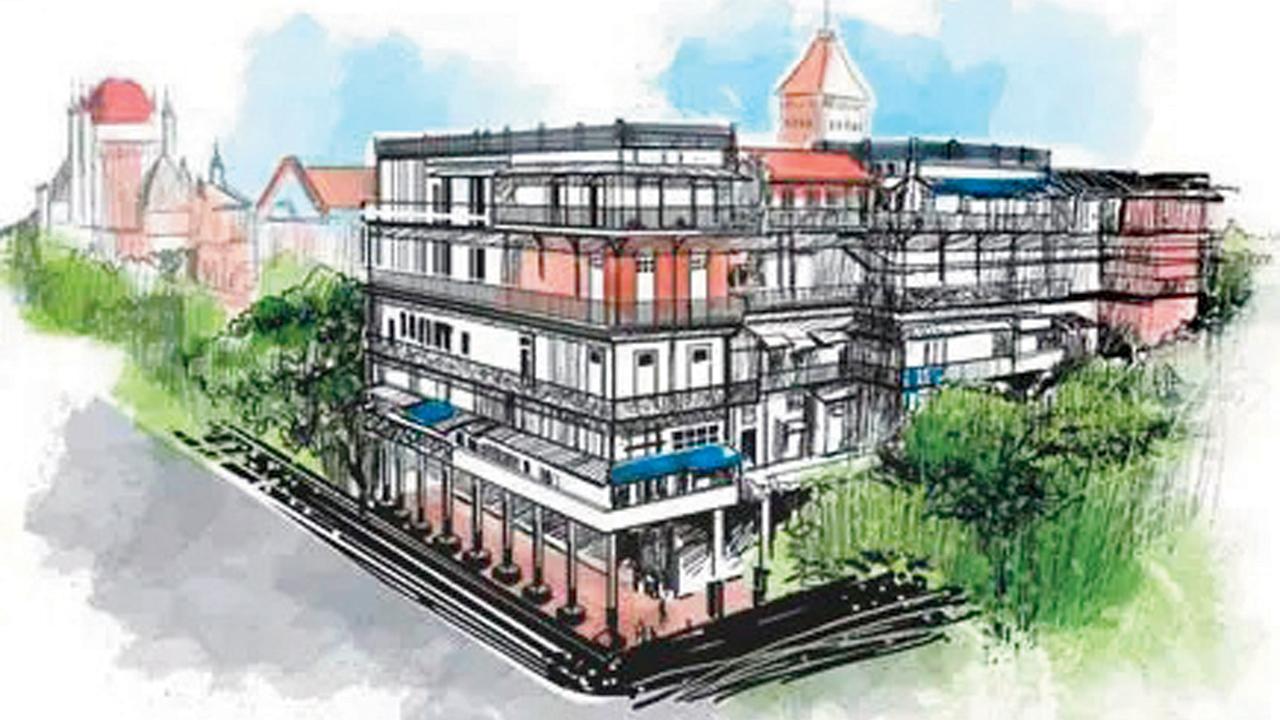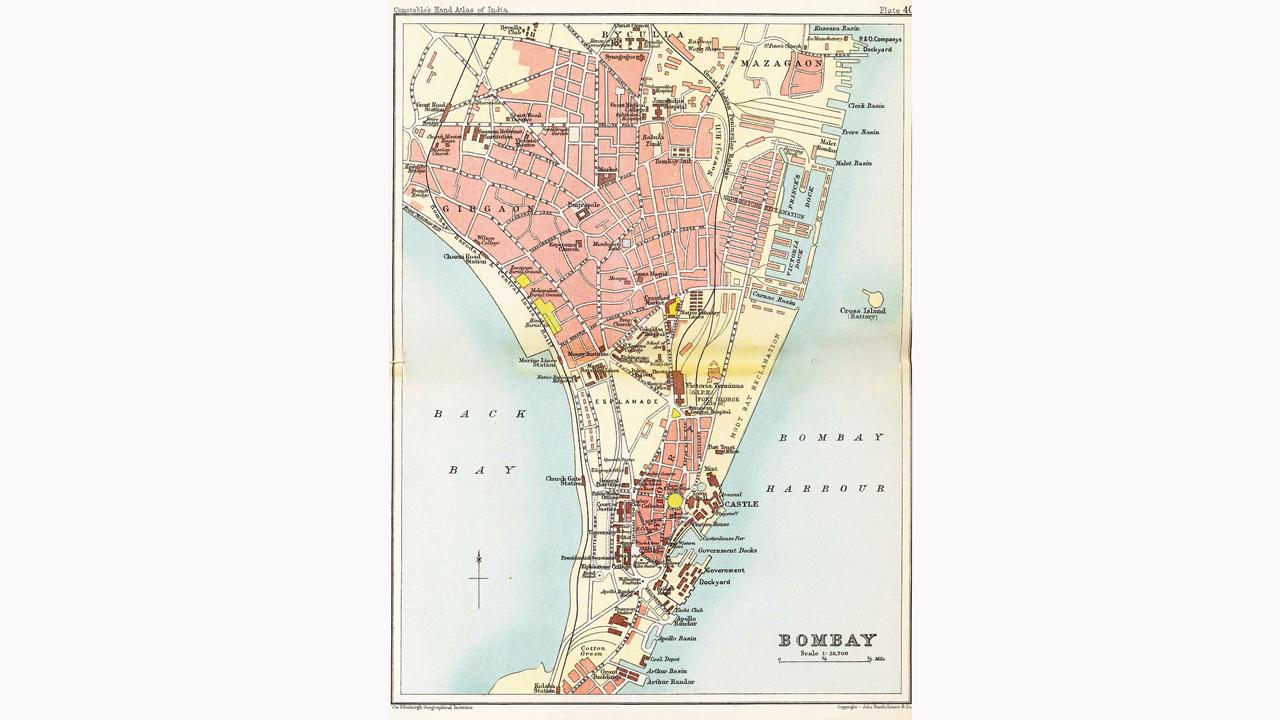What happens when a famous American writer vanishes from his room in a luxurious Bombay hotel? Anuradha Kumar stitches a fictional mystery-meets-history storyline that comes alive with eclectic characters and twisted sub plots

Kumar says that knowing about Twain’s appearance through her research helped her describe his appearance. The shaggy mop of hair, the clear lively eyes, and the bristly moustache. “I tried to fit his mannerisms around the way he looked.” Pic/Wikimedia Commons
Years ago, while on a reporting assignment, this writer recalls treading precariously inside Kala Ghoda’s Watson’s Hotel, a dilapidated heritage site that was once the toast of Bombay’s rich, and famous including Sir Richard Burton and Muhammad Ali Jinnah. It was tough to imagine its past glory, including how its once celebrity guest Mark Twain would have reacted to its decay.
ADVERTISEMENT
Author Anuradha Kumar didn’t struggle though, to reimagine Twain’s thoughts; in fact, she went as far as to accurately recreate the streetscape of 1890s Bombay as the bustling backdrop for the American literary great’s disappearance within days of his arrival, from the same hotel.
 An illustrated impression of Watson’s Hotel, today’s Esplanade Mansion
An illustrated impression of Watson’s Hotel, today’s Esplanade Mansion
What ensues in her new mystery fiction title, The Kidnapping of Mark Twain (Speaking Tiger) is a thrill-a-page adventure with quirky characters who stir up sufficient excitement to make you secretly wish this was really part of our history.
For Kumar, choosing Twain as the centrepoint for her whodunit was serendipitous. “I had read Following the Equator, and more of Twain’s work. After I wrote Coming Back to the City, the idea of a novel involving Twain emerged out of the blue. I live in the US now, so it was a happy accident of thinking,” she tells mid-day in an email interview.
 An artist’s impression of a view from a top floor of Watson’s Hotel in its heyday. Twain and his family would have most likely been treated to such vistas of 1890s Bombay. Pic/Wikimedia Commons
An artist’s impression of a view from a top floor of Watson’s Hotel in its heyday. Twain and his family would have most likely been treated to such vistas of 1890s Bombay. Pic/Wikimedia Commons
Early in the book, Kumar’s skills as an imaginative chronicler come to play. The plot’s ambitious scale, with a smorgasbord of characters, crisscrosses its way through the original city. Think Shantaram meets Slumdog Millionaire in a vintage plot. Kumar credits Nobel laureate Patrick Modiano (Literature, 2014) who maps Paris with meticulousness and detail, as her influence. “With the landmarks now gone, his protagonists remember them vividly,” she reveals. In this book, she hopes that readers will see Bombay as did Twain, and everyone around him —trade consul Henry Baker, his female companion Maya Barton, and his trusted aide Abdul. “That they would walk along the same streets, see the things, smell the same everyday smells, and hear the vendors, and musicians calling out.” In Following the Equator, Twain had visited parts of old Bombay where the cosmopolitan classes lived. But, the book also throws up a murder case that must be solved. This expanded the city’s horizons, bringing in Parel and Mazagaon.
The storyline is a delightful joyride for a reader familiar with the city’s19th century history. However, first-timers too will jump on to the thrilling ride. Its thriving opium trade, potpourri of cultures, a labour leader’s murder, a mysterious stilt-walking magician, a thief and a preacher, mentions of The Bombay Gazette, lend the plot sufficient theatre, suspense, and relatability.
 Kumar sourced old Bombay maps, including one from Constable’s Hand Atlas of 1893 (in pic), and others provided by Ian Poyntz (at Indianwaterportal.org). She had them enlarged, printed and framed on the wall above where she worked, and would find herself frequently looking up to check and confirm if her characters were moving and walking about in the right places, which of these were likely to be crowded, how the character of a street too changed as one moved from the city’s south to parts northward. Pic/Wikimedia Commons
Kumar sourced old Bombay maps, including one from Constable’s Hand Atlas of 1893 (in pic), and others provided by Ian Poyntz (at Indianwaterportal.org). She had them enlarged, printed and framed on the wall above where she worked, and would find herself frequently looking up to check and confirm if her characters were moving and walking about in the right places, which of these were likely to be crowded, how the character of a street too changed as one moved from the city’s south to parts northward. Pic/Wikimedia Commons
Kumar’s attention to detail is Conan Doyle-like. “I worked hard to recreate Watson’s Hotel [now Esplanade Mansion], and how it might have seemed to Twain, his wife and daughter. Besides the illustrations in his book, there were details I researched: how its frame structure, especially the glass atrium, was shipped from England and reassembled; the view from the verandah as Twain and later Baker looked out, the people who worked in it.” She also tracked down stories that remained apocryphal, including this bring a white-only hotel (“it had a certain elitism”). “But for every small detail, I had to fact-check. For example, the telephone Baker used, the stick provided in the hotel to beat snakes with, the smell of opium, the use of fingerprinting as a detection technique that emerged around then [Twain had presciently alluded to in an earlier work]—it all needed exhaustive research, so I was always rework my own story.”
While the plot is a compelling one, Kumar’s characters propel it forward. American trade counsel Henry Baker, despite being an outsider ends up as the reticent hero. “I thought I should have someone who had easy access to Twain, since there were societal constraints and polite conventions. Baker’s presence also helped give a certain authenticity–Olivia, Twain’s wife, would feel reassured by his presence. As a fellow-American, she felt he understood her readily, in a new place.” For Twain’s character, plenty of reading was necessary. “He was extremely curious, and always open to new experiences—this is evident in his writing. His aphorisms, several of which open his chapters in Following the Equator, are witty and haven’t dated.”
 Anuradha Kumar
Anuradha Kumar
Interestingly, characters like Freddie Bancroft existed during Twain’s visit. “There are references in old newspapers of his stay in India to learn magic. He was in insurance; he got into trouble for arson once but I made up the rest as I went along. He died young, which made me feel sympathetic towards his character later.” For Kumar, Maya, the sharp, mysterious Anglo-Indian educator’s character was a difficult one to draw up, “Often, her ‘outsider’ position enabled her to unconventionally move among different settings. There were other women like her—Pandita Ramabai, doctors who worked in Bombay, Edith Pechey, Charlotte Ellaby. It was challenging but they were ahead of their times.”
After the heady, pulsating chase, our last question for Kumar has to be about straddling history and fiction. “It was a challenge, but most of it was fun. At almost every sentence I had to stop, to figure out the historical certainties of a particular detail.” We smile when she admits that unveiling some of the complexities of how far the Henry Baker-Maya Barton romance (one of our favourite trajectories in the story) would go, was a challenge. “It was tricky to ensure it did not get in the way of the detective story. While working out the mystery, I was wondering if it was all right to let them kiss, or would that make things difficult to solve the mystery. Maybe another day, another story,” she teases.
 Subscribe today by clicking the link and stay updated with the latest news!" Click here!
Subscribe today by clicking the link and stay updated with the latest news!" Click here!







